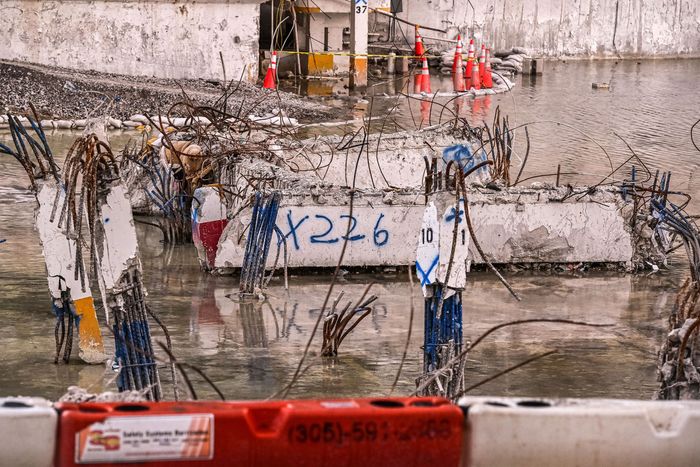
For over a month, crews worked to recover survivors and then the dead from the collapsed Champlain Towers South in Surfside, Florida. The 98th and final victim was identified only two weeks ago. During the same period, forensic engineers have combed through the debris of the 12-story condominium tower, searching for the reason for the building’s sudden, catastrophic failure. Now a report in the Miami Herald based on interviews with engineers and construction experts has pinned the cause on multiple, extensive structural flaws that existed in the building for 40 years.
“Flawed from day one” reads the report, which highlights problems in the original plans that forced the builders to make decisions on the fly that would have compromised the structure. Drawn up by a firm — Breiterman, Jurado and Associates — that no longer exists, the plans specified structural columns that were too narrow to accommodate enough rebar, meaning that contractors had to choose between cramming extra steel into a too-small column — which can create air pockets that accelerate corrosion — or inadequately attaching floor slabs to their supports. Both theories were proposed by experts who questioned the structural integrity of the building immediately after the collapse. Some of the most problematic areas of the structure were around the pool deck, where a video recorded by a tourist staying across the street shows water pouring into the parking garage underneath minutes before the collapse.
“The deck — which sat on skinny columns to maximize parking space below — was barely designed with enough strength to support a pool party, much less the layers of pavers and standing water that loaded it down over the decades,” the report says. “While original design flaws alone were unlikely to have initiated the collapse that happened 40 years after construction, engineers consulted by the Herald said the deficiencies, in combination with concrete deterioration, could have been the difference between a single floor caving in and the kind of progressive collapse that killed 98 people.”
Building codes have become much more stringent in the past four decades, the report notes, requiring stronger steel reinforcement and concrete less susceptible to salt-water intrusion, meaning newer buildings are unlikely to have these issues. But the collapse may trigger a wave of reform in the way buildings from the same era are inspected and repaired. Some Miami engineers recently told Curbed they have been evaluating 30 to 50 properties per week lately. And although few of the condo towers that line Miami Beach are likely to have the same engineering flaws, they will all be forced to confront a near future of demolition or abandonment amid “irreversible” sea-level rise, according to today’s IPCC report. Nevertheless, the property on which the Champlain Towers South once stood will hit the market soon — and is expected to go for as much as $100 million.




